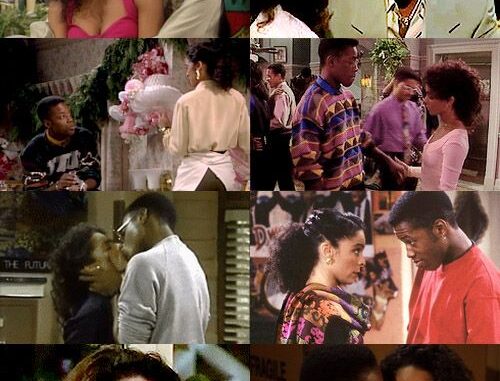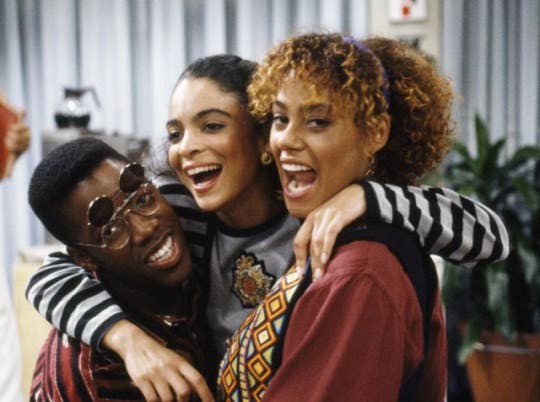
Back when a hashtag was just the pound sign on a telephone, the television sitcom A Different World sent a clear message that black lives mattered. The Cosby Show spin-off followed Denise Huxtable to Hillman College, a fictional historically black college in Virginia. The show brought African-American culture in all its Cross-Coloured glory into the homes of millions of Americans.

Historically black colleges and universities (HBCUs) had long been a silent guest star on The Cosby Show. As Cliff Huxtable, Bill Cosby had an endless supply of sweatshirts with names like Tuskegee, Xavier, and Winston-Salem emblazoned on them. But The Cosby Show centered on one family and, in doing so, presented Black culture through a singular, upper-middle-class lens, an image ultimately shattered by the contradictions between Cosby’s onscreen persona and the dozens of rape accusations the comedian now faces.
But an HBCU campus is a kaleidoscope of socioeconomic backgrounds, interests, hometowns, and skin colors ranging from milky porcelain to deep obsidian. By depicting the environment on primetime television, A Different World introduced Americans — white and black — to versions of blackness beyond the walls of the Huxtables’ brownstone.

A Different World ran from 1987 to 1993, but I became a devoted viewer when it was in syndication in the late ’90s. When I was a young boy, I focused on classes, school activities, and not much else. This meant I spent hours in front of the television, gleaning life lessons from the characters on the screen. With my mother at work and my friends taking in the sights and sounds of Crenshaw Boulevard in Los Angeles, I was in my own bubble. I would sit with my legs crossed on the hardwood floor of my family’s living room waiting for the Hillman gang to appear. Aretha Franklin’s soulful opening notes of the theme song set the tone for the black excellence to come.
The show introduced Americans to versions of blackness beyond the walls of the Huxtables’ brownstone.
In A Different World’s first season, Denise was the star of the show. This changed when Lisa Bonet became pregnant with Lenny Kravitz’s child. After Bonet’s departure, the spotlight shone on math whiz Dwayne Wayne (Kadeem Hardison) and his on-again-off-again girlfriend, the prissy Southern belle Whitley Gilbert (Jasmine Guy). They were accompanied by a crew of lively college kids. Jokester and wannabe playboy Ron Johnson (Darryl M. Bell) was Dwayne’s partner in crime. Kimberly Reese, the med student played by Charnele Brown, balanced her determination to succeed with a razor-sharp wit. Jaleesa Vinson (Dawnn Lewis), a strong-willed divorcée, was the group’s voice of reason.
Of all the characters, I found my kindred spirit in the politically minded hippie chick Freddie Brooks (Cree Summer). Her creative and sometimes wacky ventures were rooted in an earnest desire to uplift those around her. While most Hillman students stuck to the same themes of love and academics, Freddie did everything from editing a poetry magazine to delving into archeology to hosting a tea social along with fellow classmate Whitley. Whether Freddie’s ambitions were successful or not, at the very least she inspired her fellow students by the end of each episode.

Whitley constantly urged Freddie to give up her carefree ways. Growing up, I dealt with much of the same. My friends at my virtually all-black high school insisted that quirky wasn’t cool. Bolstered by Freddie’s audacious spirit, I became the school’s first male cheerleader, joined the salsa and Boggle clubs, and, on a whim, dyed my hair a temporary bright blue. This was South Central L.A. in the ’90s – the epicenter of oversize flannel shirts, lowrider cars, and West Coast rap battles. I stood out at a time when people wanted to blend into the restless surroundings. Freddie taught me it was perfectly OK to follow your passion and maintain your individual sense of style while doing it. It was this line of thinking that made me who I am today.
When I began applying for colleges my senior year, my extended family insisted that I attend a predominantly white institution like New York University or the University of California, Los Angeles. My strong grade point average and long list of extracurriculars meant to them that I should attend a more “suitable” school. However, during campus visits, I immediately noticed that the number of students who looked like me was few. Because of A Different World, I knew I didn’t have to accept that fate. I didn’t have to be an Other.
